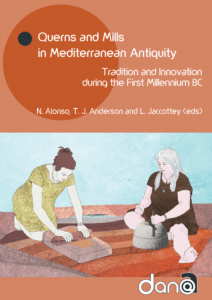UN@ est une plateforme d'édition de livres numériques pour les presses universitaires de Nouvelle-Aquitaine
Auteur : Sylvie Cousseran-Néré
The hopper rubber is a grinding tool associated with the spread of the ancient Greek world throughout the Mediterranean. Its presence is certified at certain Greek or Greek-influenced sites in the southeast of France during the second half of first millennium BC (Py 1992; Chausserie-Laprée 1998; Frankel 2003; Jaccottey et al. 2013).
The Lez River Valley runs roughly from north to south through Languedoc’s coastal plain to the east of Montpellier. The Late Bronze Age oppidum of Sextantio at the foot of the first limestone massiFs a few kilometres inland is this valley’s first major Protohistoric occupation.
The grinding tools from Protohistory to Late Antiquity along France’s Mediterranean coastline have not, to date, been the object of a systematic survey. This renders the current study of nearly 200 grinding stones unearthed during different excavations of the Greek colony of Olbia de Provence even more relevant.


